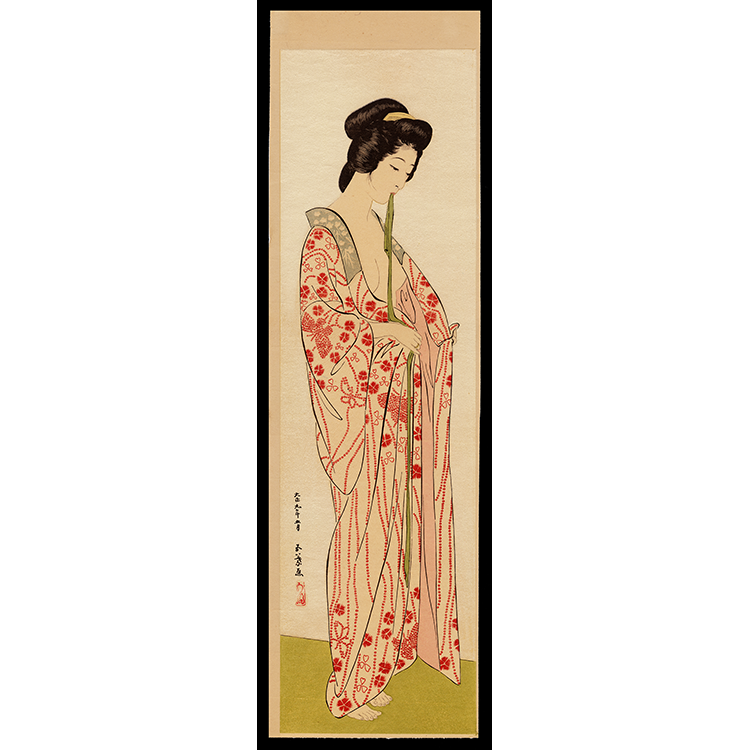 Image 1 of
Image 1 of

<b>WOMAN IN SUMMER GARMENT</b>Hashiguchi Goyo1920$25,000</em>
ARTIST: Hashiguchi Goyo (1880-1921)
TITLE: Woman in Summer Garment
MEDIUM: Woodblock print
DATE: 1920
DIMENSIONS: 18 x 11 3/4 inches
CONDITION: Excellent
NOTE: Early work published during artist’s lifetime; silver mica over bronze color background
LITERATURE: Hashiguchi Goyo: Women of the Taisho Era, Limited Edition Luxury Prints, 1989
$25,000.00
ARTIST: Hashiguchi Goyo (1880-1921)
TITLE: Woman in Summer Garment
MEDIUM: Woodblock print
DATE: 1920
DIMENSIONS: 18 x 11 3/4 inches
CONDITION: Excellent
NOTE: Early work published during artist’s lifetime; silver mica over bronze color background
LITERATURE: Hashiguchi Goyo: Women of the Taisho Era, Limited Edition Luxury Prints, 1989
$25,000.00
ARTIST: Hashiguchi Goyo (1880-1921)
TITLE: Woman in Summer Garment
MEDIUM: Woodblock print
DATE: 1920
DIMENSIONS: 18 x 11 3/4 inches
CONDITION: Excellent
NOTE: Early work published during artist’s lifetime; silver mica over bronze color background
LITERATURE: Hashiguchi Goyo: Women of the Taisho Era, Limited Edition Luxury Prints, 1989
$25,000.00
Details
Hashiguchi Goyo was enamored by Ukiyo-e and by the bijin-ga of Utamaro. Goyo saw Utamaro as the artistic height of Ukiyo-e, exemplifying the depiction of femineity through his graceful and sophisticated figures. Goyo also studied the intricate printing effects in Utamaro designs and sought to replicate their delicate and sensual qualities.
This striking design is one of the works Goyo self-produced in his studio. The design features a woman at her toilette preparing for a summer day. The design is subtle and seductive. The woman’s glance seems just to meet the viewer’s eye. The impression is a tour de force in printing: the fine lines of the woman’s hairline and facial features are both delicate and realistic, not to mention the astounding printing effects that show the woman’s semi-nude contours through the sheer quality of the kimono.
Connoisseur's Note
This work is an early printing executed under the strict supervision of the artist. Later impressions done with the original blocks circa 1950s by the Goyo Institute have slight variations in color and a thicker application of mica. Often these posthumous impressions are offered as early originals without much contention by the untrained eye.




